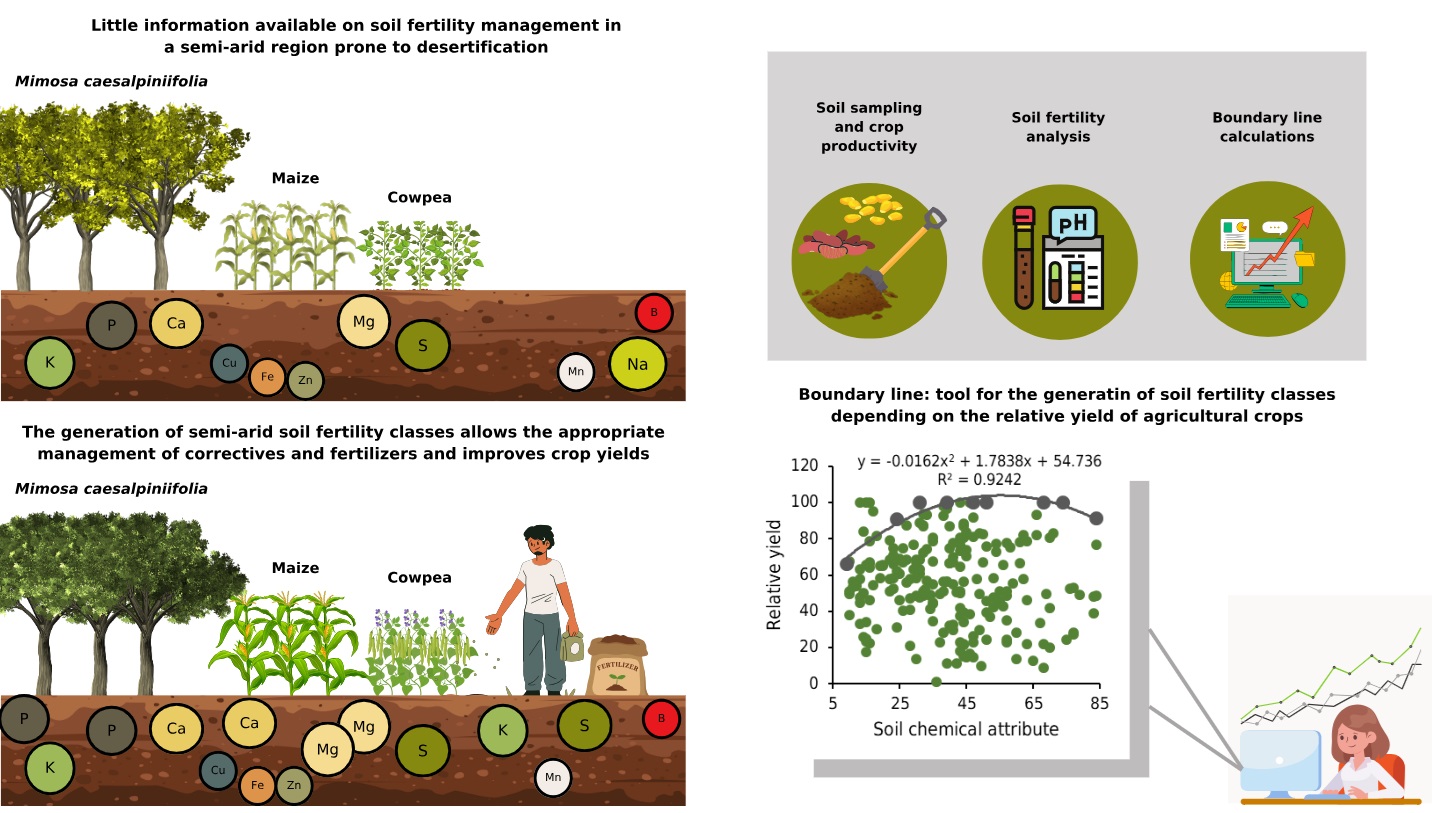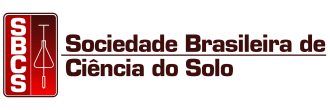
HIGHLIGHTS
Boundary line method optimizes nutrient management to obtain high agricultural yields
Method based on relative yield generates five classes of interpretation of fertility
P, K and Ca show concentrations adequate higher to the reference literature
Disregarding the high clay activity in the semi-arid region limits the yield of crops
ABSTRACT
Soil fertility evaluation is important for adopting conservation management and adequate nutrient supply. The objective of this study was to identify critical levels and soil fertility classes using the boundary line method for rainfed crops (corn, cowpea and sabiá [Mimosa caesalpiniifolia]) in the Brazilian semi-arid region. A database of 226 soil fertility analyses of samples from the 0.00-0.20 m soil layer, and corn, cowpea and sabiá yields from Ceará State was used to generate interpretation classes (at 80 and 95 % of maximum yield). In a scatter plot, soil nutrient concentrations (x-axis) and relative crop yields (y-axis) were correlated, and the border points fitted to a quadratic model. Proposed interpretation classes were classified as very low, low, adequate, high and very high, except for Na+, whose adequate class was considered tolerable. Generated models showed coefficients of determination (R2) for the chemical properties ranging from 0.54 to 0.92. Based on the interpretation classes, the critical level was determined as 6.3 for pH, 10.8 g dm-3 for OM, 20.9 mg dm-3 for P, 81 mg dm-3 for K, 55 mmolc dm-3 for Ca2+, 24 mmolc dm-3 for Mg2+ and 8 mg dm-3 for S-SO42-. Interpretation classes for soils with high-activity clay in the Brazilian semi-arid region were superior to those in the reference literature. Boundary line method established fertility classes and critical levels for soil chemical properties in more than one crop, using the concept of relative yield.
No tags for this post.



